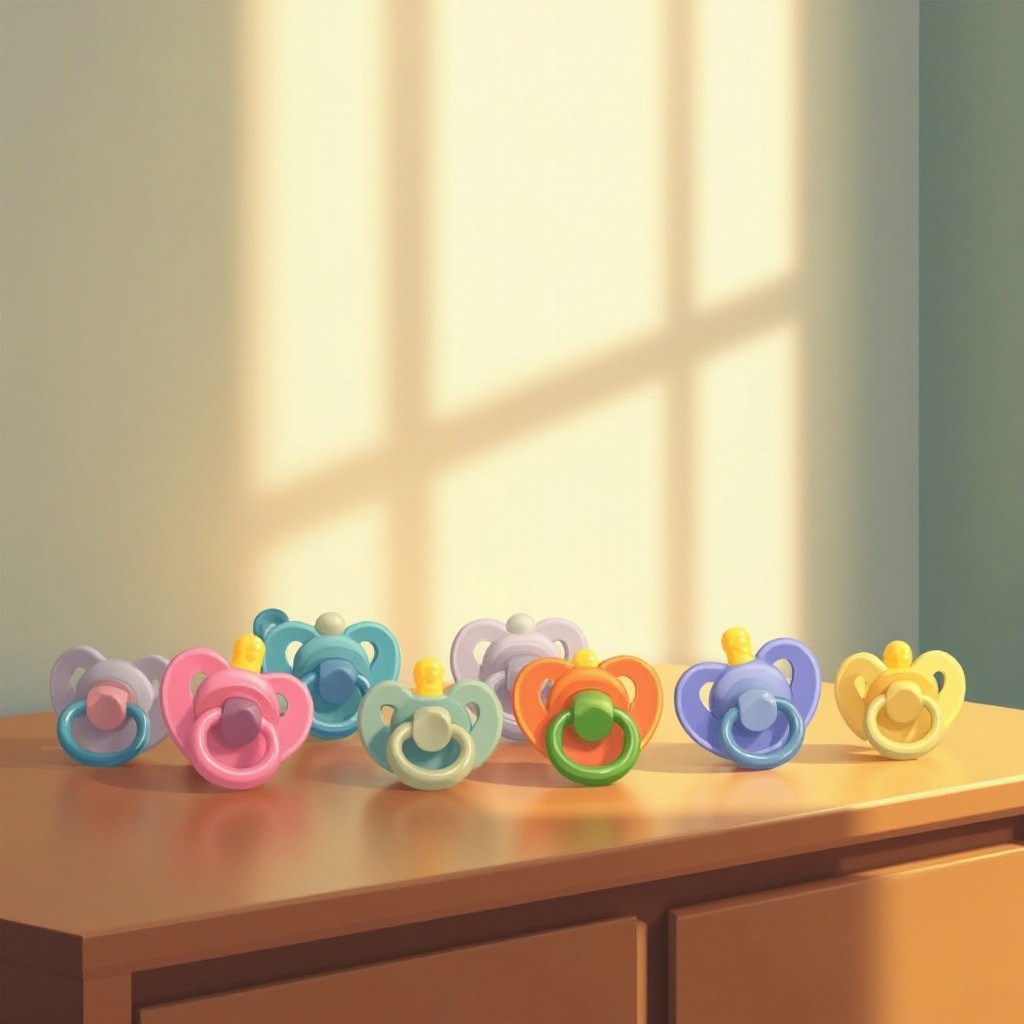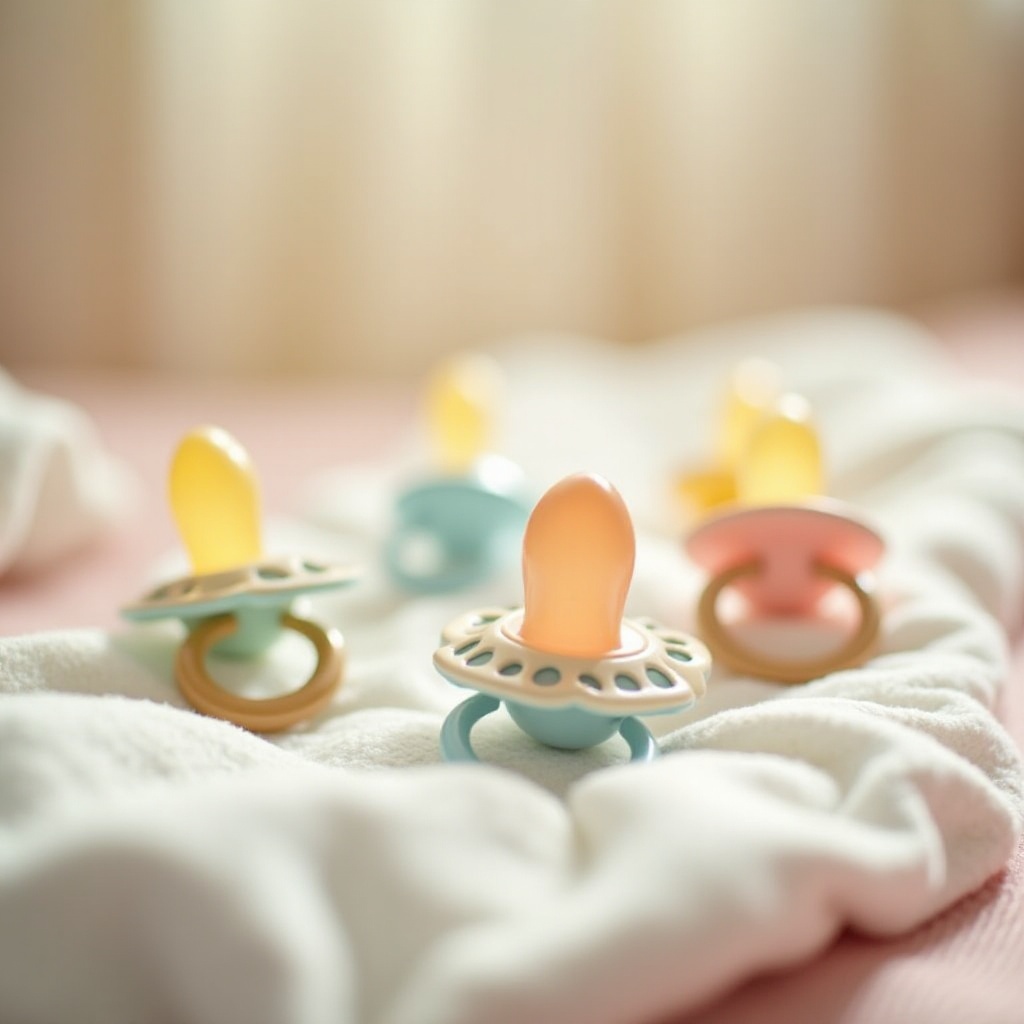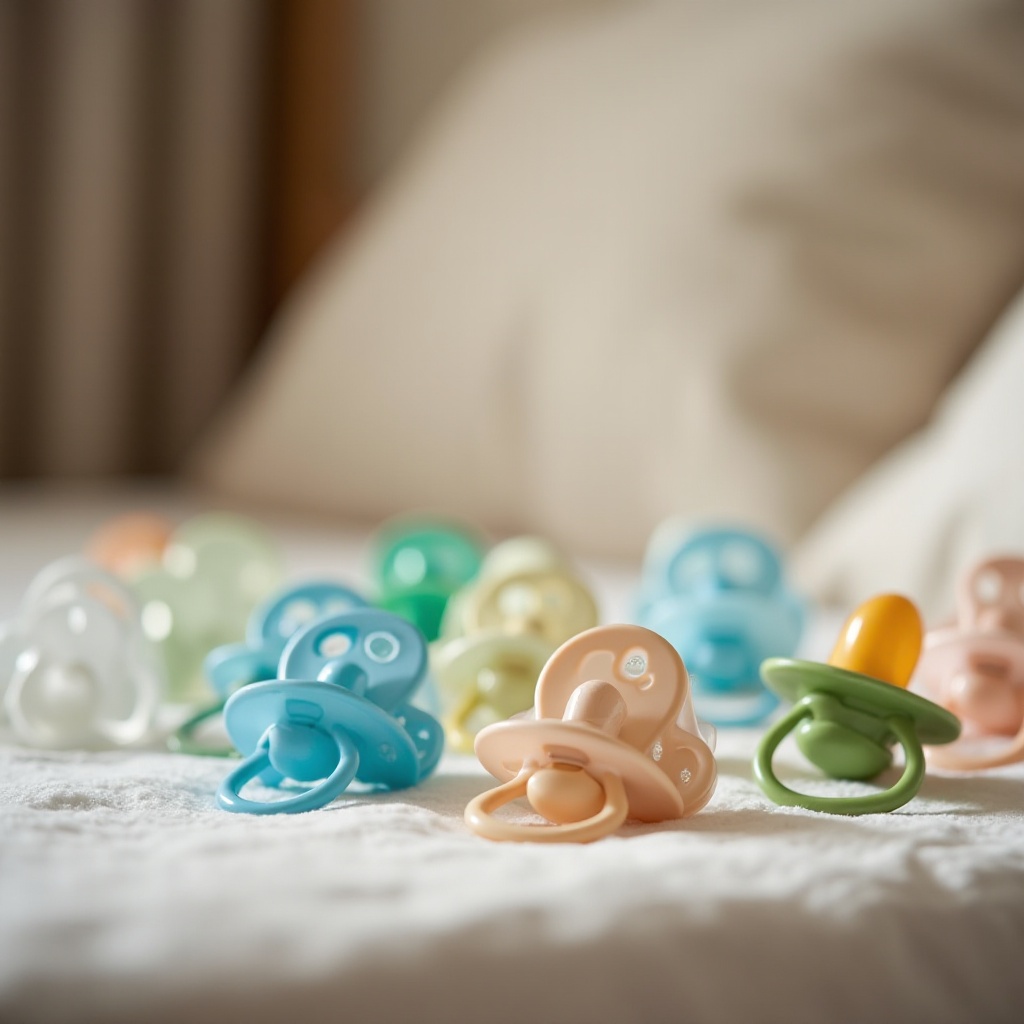Introduction
Navigating through parenting often brings up the practical concern of ‘How many pacifiers do I need?’ These simple tools provide essential comfort to infants and can be a lifesaver during restless evenings and fussy outings. Knowing how many pacifiers you need can prevent unnecessary stress and keep your baby soothed.
Pacifiers are not just accessories; they are comforting aids that play a significant role in calming infants throughout various stages of growth. By understanding pacifier basics, parents can make informed decisions that contribute to their baby’s well-being.

Understanding Pacifier Basics
Pacifiers are available in numerous types, materials, and designs, each catering to specific needs.
- Types of Pacifiers: Orthodontic pacifiers support oral development, while symmetrical designs ensure comfort in the baby’s mouth regardless of positioning.
- Benefits of Pacifiers for Babies: Beyond soothing, pacifiers can assist with teething discomfort and satisfying the natural sucking reflex in infants, promoting overall happiness and less stress at bedtime.
- Addressing Concerns About Pacifier Use: Many parents worry about potential dependencies or future dental issues. With proper use and gradual weaning, these concerns can be effectively managed.
Understanding these basics helps parents decide not only on the number of pacifiers but also their types according to specific needs.
Determining the Right Number of Pacifiers
The number of pacifiers needed is unique to each family and depends on various factors.
- Factors Influencing Pacifier Quantity: Think about daily routines, laundry frequency, and contingency plans for when pacifiers are lost or soiled.
- Recommended Number for Newborns: Typically, it’s beneficial to have three pacifiers: one for regular use, one as a backup, and another stored for unexpected needs.
- Adjustments as Your Baby Grows: As babies develop personal preferences and grow, the number and type of pacifiers might need adjustments. Monitoring their reaction and comfort with different models can guide these changes.
By determining the appropriate quantity, parents can ensure constant access to a comforting pacifier, reducing stress for both parent and child.

Managing and Organizing Pacifiers
Efficient management of pacifiers ensures they are clean, sanitized, and easily accessible.
- Tips for Keeping Track of Pacifiers: Utilize labeled containers or baskets strategically placed around the home, such as in the nursery, living room, or diaper bag, so a pacifier is always available on demand.
- Best Practices for Cleaning and Sterilizing: Regular washing with warm soapy water followed by sterilization, either by boiling or using an appropriate sterilizing device, maintains pacifier hygiene.
- Efficient Storage Solutions: Consider using specialized pacifier pouches for travel, avoiding contamination and ensuring regular accessibility.
These organizational strategies provide peace of mind, knowing your baby’s pacifiers are cleanly stored and ready for use.
Making Safe and Smart Choices
Safety is a top priority when selecting pacifiers, alongside comfort and convenience.
- Selecting Safe Materials for Pacifiers: Ensure pacifiers are BPA-free and opt for silicone variants, which are durable and easy to clean.
- Integrating Teethers for Comfort: As your baby enters the teething stage, providing teething rings alongside pacifiers offers additional comfort and distraction for the little one, further easing the teething process.
By choosing safe pacifiers and integrating teethers, parents enhance their baby’s comfort while supporting healthy growth.

Conclusion
Understanding the number of pacifiers needed involves preparation and adaptability to your baby’s changing requirements. By thoughtfully managing pacifier use, parents can secure comfort and stability for their child, leading to smoother and happier days.
Frequently Asked Questions
How do I know if my baby wants more pacifiers?
If your baby frequently cries or seems distressed without a pacifier, consider increasing the number you have readily available.
What should I do if my baby rejects the pacifier?
Try introducing different types or brands. A change in shape or material can sometimes make a significant difference.
How can I ensure my pacifiers are germ-free?
Regular cleaning with soap and water, coupled with boiling them periodically, can effectively rid pacifiers of germs and maintain safety.
